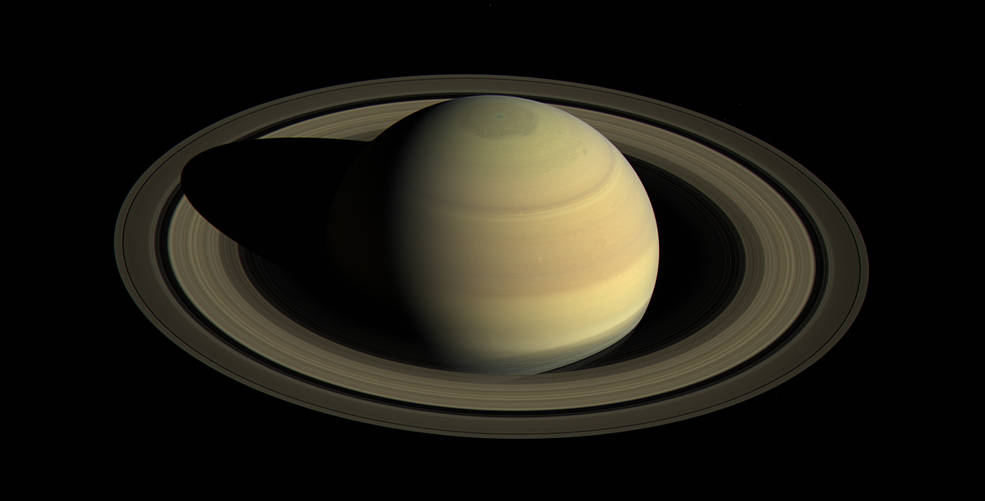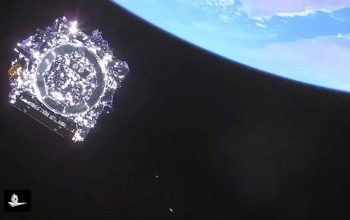After over 12 years studying Saturn, NASA’s Cassini spacecraft begins its intrepid finale: a yearlong two-part mission.
Before we reach the end of Cassini’s voyage in September 2017, the spacecraft is scheduled to complete two missions: The F-ring orbits and the Grand Finale.
The F Ring Orbits
Cassini will venture closer to Saturn than ever before beginning on November 30th, when the spacecraft’s orbit will direct it just past the outer edges of the planet’s main rings, a region known as the F ring. From a series of 20 weekly orbits, NASA hopes to study Saturn’s rings and small moons with heightened precision. The F ring was briefly explored in 2004 when Cassini first arrived at Saturn. Only the backlit side of the rings were explored. Scientists now have a moment to document the ring structure on both sides at high resolution. Cassini will approach nearly 4,850 miles (7,800 kilometers) to the center of the F ring.

Saturn, the second largest planet in the solar system, has multiple rings and satellites. The F ring was discovered in 1979 by Pioneer 11, and is very active. The ring’s features can change within a matter of hours, making it an exciting region of Saturn to study.

The Grand Finale
Appropriately named the Grand Finale, Cassini’s last mission will begin April 2017. The spacecraft will utilize the gravity of Saturn’s large moon Titan to redirect its orbit. When it arrives at the region between Saturn and the rings, Cassini’s orbit will pass through this unexplored region 22 times. The first dive into this 1,500-mile-wide region (2,400 kilometers) should occur on April 27th, 2017.
Utilizing the close proximately to the planet, Cassini will map Saturn’s magnetic and gravity fields, as well as capture images of the atmosphere at a range closer than ever before. Samples of dust-sized particles from the main and outer rings will also be analyzed for the first time. Plans for the spacecraft to study Saturn’s interior structure, the mass of its rings (and hopefully determine their age), and the exact length of the planet’s day.
The grand finale of the Grand Finale entitles a dramatic dive into Saturn’s atmosphere. Cassini will continue to send data regarding the planet’s chemical composition until its signal is terminated. Cassini will then burn as meteor does due to friction with Saturn’s atmosphere.
The End of Cassini
When the Cassini-Huygens Probe launched from the Cape Canaveral Air Force Station in Florida on October 15th, 1997, the science of that decade remained blind to the complexity of Saturn. After five years, two Venus flybys, an Earth flyby, and a Jupiter flyby, Cassini reached Saturn on July 1st, 2004. Its primary mission was expected to last only 4 years. Over 12 years after arriving at Saturn and two extended missions later, all that is great must reach a conclusion.
The 5,000 people who managed the Cassini-Huygens program came from NASA, the European Space Agency (ESA), and the Agenzia Spaziale Italiana (ASI or the Italian Space Agency). Cassini not only united scientists and engineers from over 27 nations, but also the millions of people who have witnessed the progress and successes of the mission. The millions of people who have shared the same predilection to follow Cassini toward this whimsical moment in space exploration; the zenith of its expedition.
Published by Julia Mariani
Sources: NASA’s Jet Propulsion Laboratory, Astronomy Now



